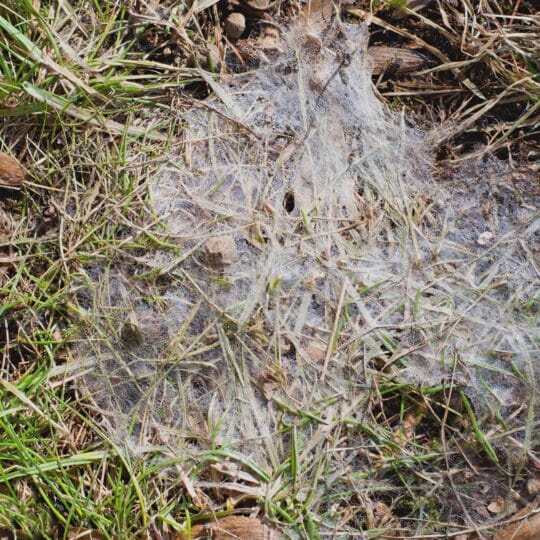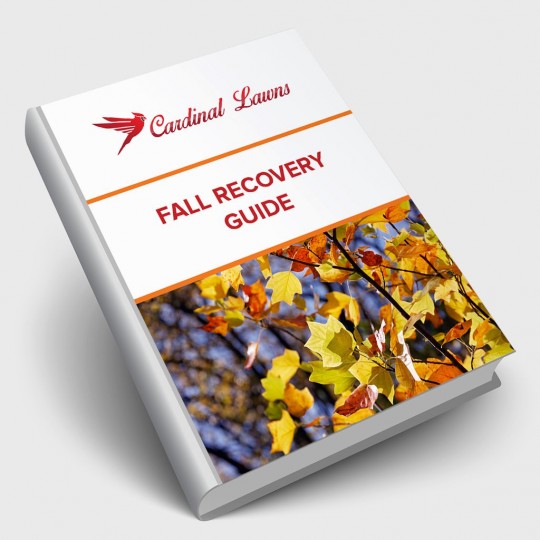Is it Too Late to Prevent Snow Mold?
How to Save Your Lawn Once it Snows
Posted
January 16, 2025

Maybe fall flew by before you could apply preventative fungicides. Or maybe your area typically doesn’t get snow, but surprise! There’s now a white blanket across your lawn. Whatever the case, there are still ways to help prevent snow mold after the first snow fall. It may just take a little more work.
What is Snow Mold?
If you’re not already familiar, snow mold is a type of fungi that affects cool-season grasses. Gray or pink straw-like patches appear on your lawn in the spring once the snow has melted. It’s more likely to happen if you receive a heavy snowfall before the ground freezes. Other factors that contribute to mold growth include:
- Long grass blades
- Leaves and other debris
- Excess moisture
- Weakened grass
Gray snow mold usually only affects the grass blades, making it easier to treat. But pink snow mold can kill the crown and the grass roots, leaving more destruction. While there are ways to treat snow mold, preventing it is easier.
Prevent Snow Mold
Whether you’ve dealt with snow mold before or just want to help your grass thrive over the winter, there are certain practices to consider in the late fall.
- Treatment. Snow mold fungicides work better as a preventative measure. Therefore, they should be applied in the fall before any snow falls.
- Mow short. The last cut of the fall season should be a short one to help prevent long blades from matting under heavy snow.
- Remove leaves and thatch. A thick layer of leaves and thatch traps even more moisture and creates an ideal environment for mold.
- Aerate. Not only does this help improve the flow of moisture and nutrients to strengthen your lawn, but it also helps reduce thatch buildup.
- Adjust fertilizer and watering schedules. Opt for a slow-release feeding formula in the late fall and limit irrigation to reduce moisture.
In a perfect world, you had time to fulfill all these lawn care tasks in the fall right before the grass went dormant and the snow fell. If you didn’t, there are still ways to help limit damage:
- Reduce snow piles. When clearing snow from sidewalks and driveways, avoid creating deeper snow piles in the lawn. If you have to, use a snow blower to spread it out so it melts faster.
- Keep off the grass. Try not to walk on snow-covered or frozen grass. This can compact the soil, matt-down areas, and break off brittle blades.
- Spread coffee grounds. You may have made a fresh pot of coffee to sip while gazing at the newly fallen snow. Before you trash the filter, consider spreading the hot, gritty grounds on the snow and ice. Not only will this help it melt, but it’s better for the environment than harsh salty chemicals.
As with any preventative measure, there’s no guarantee your lawn is completely safe from snow mold. But there are ways to revive grass health.
Treating Damaged Grass
If you didn’t get to all the preventative measures and find yourself faced with snow mold in the spring, there are ways to help heal your lawn. Fungicides may not be as effective after the fact, so try these chemical-free practices.
- Gently rake the affected areas to loosen matted grass. This helps the lawn dry and gives unaffected grass room to grow.
- Repair thin, damaged areas by spreading new grass seed.
- Reseed larger areas of dead grass with new turf.
Now that you know how to prevent and treat snow mold, it gives your lawn a better chance of surviving the next snowy season.

Download Your FREE Fall Recovery Guide
Summer’s extreme conditions can take a toll on your grass and its health. Take some time to learn how to bring your lawn back to life. This handy guide teaches you what needs to be done for a full fall recovery.